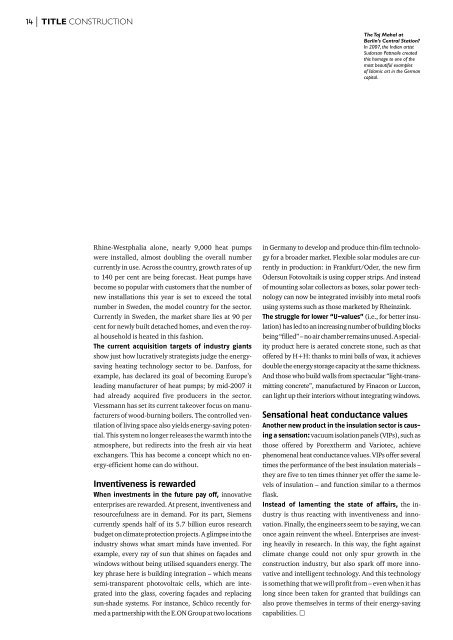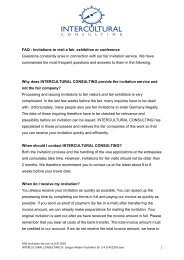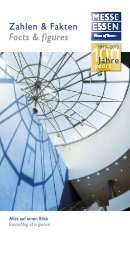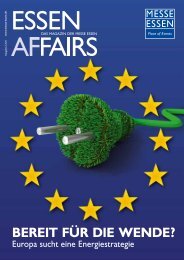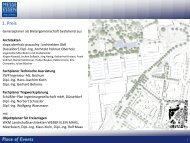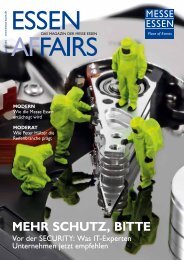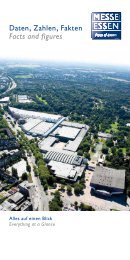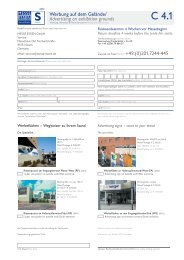Create successful ePaper yourself
Turn your PDF publications into a flip-book with our unique Google optimized e-Paper software.
14 | title ConstruCtion<br />
Rhine-Westphalia alone, nearly 9,000 heat pumps<br />
were installed, almost doubling the overall number<br />
currently in use. Across the country, growth rates of up<br />
to 140 per cent are being forecast. Heat pumps have<br />
become so popular with customers that the number of<br />
new installations this year is set to exceed the total<br />
number in Sweden, the model country for the sector.<br />
Currently in Sweden, the market share lies at 90 per<br />
cent for newly built detached homes, and even the royal<br />
household is heated in this fashion.<br />
The current acquisition targets of industry giants<br />
show just how lucratively strategists judge the energysaving<br />
heating technology sector to be. Danfoss, for<br />
example, has declared its goal of becoming Europe’s<br />
leading manufacturer of heat pumps; by mid-<strong>2007</strong> it<br />
had already acquired five producers in the sector.<br />
Viessmann has set its current takeover focus on manufacturers<br />
of wood-burning boilers. The controlled ventilation<br />
of living space also yields energy-saving potential.<br />
This system no longer releases the warmth into the<br />
atmosphere, but redirects into the fresh air via heat<br />
exchangers. This has become a concept which no energy-efficient<br />
home can do without.<br />
Inventiveness is rewarded<br />
When investments in the future pay off, innovative<br />
enterprises are rewarded. At present, inventiveness and<br />
resourcefulness are in demand. For its part, Siemens<br />
currently spends half of its 5.7 billion euros research<br />
budget on climate protection projects. A glimpse into the<br />
industry shows what smart minds have invented. For<br />
example, every ray of sun that shines on façades and<br />
windows without being utilised squanders energy. The<br />
key phrase here is building integration – which means<br />
semi-transparent photovoltaic cells, which are integrated<br />
into the glass, covering façades and replacing<br />
sun-shade systems. For instance, Schüco recently formed<br />
a partnership with the E.ON Group at two locations<br />
The Taj Mahal at<br />
Berlin’s Central Station?<br />
In <strong>2007</strong>, the Indian artist<br />
Sudarsan Pattnaile created<br />
this homage to one of the<br />
most beautiful examples<br />
of Islamic art in the German<br />
capital.<br />
in Germany to develop and produce thin-film technology<br />
for a broader market. Flexible solar modules are currently<br />
in production: in Frankfurt/Oder, the new firm<br />
Odersun Fotovoltaik is using copper strips. And instead<br />
of mounting solar collectors as boxes, solar power technology<br />
can now be integrated invisibly into metal roofs<br />
using systems such as those marketed by Rheinzink.<br />
The struggle for lower “U-values” (i.e., for better insulation)<br />
has led to an increasing number of building blocks<br />
being “filled” – no air chamber remains unused. A speciality<br />
product here is aerated concrete stone, such as that<br />
offered by H+H: thanks to mini balls of wax, it achieves<br />
double the energy storage capacity at the same thickness.<br />
And those who build walls from spectacular “light-transmitting<br />
concrete”, manufactured by Finacon or Luccon,<br />
can light up their interiors without integrating windows.<br />
Sensational heat conductance values<br />
Another new product in the insulation sector is causing<br />
a sensation: vacuum isolation panels (VIPs), such as<br />
those offered by Porextherm and Variotec, achieve<br />
phenomenal heat conductance values. VIPs offer several<br />
times the performance of the best insulation materials –<br />
they are five to ten times thinner yet offer the same levels<br />
of insulation – and function similar to a thermos<br />
flask.<br />
Instead of lamenting the state of affairs, the industry<br />
is thus reacting with inventiveness and innovation.<br />
Finally, the engineers seem to be saying, we can<br />
once again reinvent the wheel. Enterprises are in vesting<br />
heavily in research. In this way, the fight against<br />
climate change could not only spur growth in the<br />
con struction industry, but also spark off more innovative<br />
and intelligent technology. And this technology<br />
is something that we will profit from – even when it has<br />
long since been taken for granted that buildings can<br />
also prove themselves in terms of their energy-saving<br />
capabilities. �


